
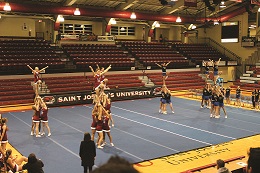
Music Licensing
Without a doubt, one of the most important issues to affect the sport this year relates to the intellectual property rights of the music used during cheer and dance performances. This has the potential to affect cheer and dance competitions from beginners all the way up to the highest level, and it’s something event owners, planners and others need to be aware of.
As a result of seeing so many problems caused by this issue, USA Cheer now has a Music Copyrights Educational Initiative, which has been developed to educate and protect the athletes, coaches and event producers who participate in cheerleading and dance. This initiative specifically focuses on providing music producers, coaches, professional members, athletes and spirit leaders with the information needed to better understand U.S. copyright laws in connection with the music used in performances, routines, competitions, school events, camps, etc. These laws were designed to protect artists, promote creativity and ensure that artists are compensated for their creations.
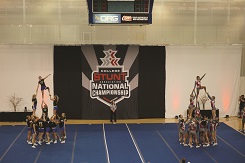 Sometimes, people say, ‘Well, we’ve always used music and we’ve never had problems before.’ But times change and unfortunately, the rules need to be very strict, because now everyone is responsible under the law, whether you’re an event owner, a rights-holder, a cheer coach or a school. Anyone who infringes on an artist’s copyright may be exposed to significant liability; each violation can incur up to a $150,000 penalty by the copyright owner per use, per instance. And it’s not really possible any longer for people to say ‘We’re just a youth team so it doesn’t count’ or ‘We just didn’t know.’
Sometimes, people say, ‘Well, we’ve always used music and we’ve never had problems before.’ But times change and unfortunately, the rules need to be very strict, because now everyone is responsible under the law, whether you’re an event owner, a rights-holder, a cheer coach or a school. Anyone who infringes on an artist’s copyright may be exposed to significant liability; each violation can incur up to a $150,000 penalty by the copyright owner per use, per instance. And it’s not really possible any longer for people to say ‘We’re just a youth team so it doesn’t count’ or ‘We just didn’t know.’
Now that cheer squads can put their routines on social media and YouTube, they have created a worldwide audience for distribution of their performances, which means it’s immediately possible for someone to see when music is being used without permission. Our guidelines were developed out of respect for all artists and as a way of protecting our members and all those involved in routines, competitions and performances of any kind in which music is used.
USA Cheer is now able to provide a list of authorized music providers. Effective May 15, 2016, all routine music may only be covers of popular songs or original compositions. In order to edit and mix this music, a license from the copyright owner must be obtained. It’s a complex issue, but we want to help the industry stay in compliance. We have worked to make it easier by putting full information on this on the USA Cheer website, and we invite those interested to look there.
STUNT
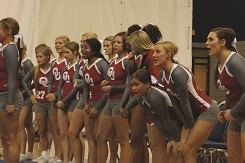 STUNT is a discipline that is growing tremendously across the U.S. It is a competition that uses the skills found in cheerleading – partner stunts, pyramids and tosses, tumbling and jumps – but it uses only two teams at a time, who perform against one another in a four-quarter, head-to-head competition. In this way, two schools can compete against one another, rather than having dozens of teams travel to one location. A bonus is that friends and family members don’t have to wait hours to see their favorite team perform, and a competition can take place in one afternoon, rather than over several days.
STUNT is a discipline that is growing tremendously across the U.S. It is a competition that uses the skills found in cheerleading – partner stunts, pyramids and tosses, tumbling and jumps – but it uses only two teams at a time, who perform against one another in a four-quarter, head-to-head competition. In this way, two schools can compete against one another, rather than having dozens of teams travel to one location. A bonus is that friends and family members don’t have to wait hours to see their favorite team perform, and a competition can take place in one afternoon, rather than over several days.
In STUNT, the two teams take the floor at the same time. In the first quarter, the teams perform identical partner stunts. In the second quarter, they perform pyramids and tosses. In the third quarter, they do tumbling and jumps, and then in the fourth quarter, all those routines are performed back to back in what is called the Team Performance segment. Within each quarter, the teams will perform four 30-second routines based on that quarter’s focus. Scores are given immediately, and the team that is leading gets to call the next routine, adding an element of strategy that you wouldn’t see in a typical cheer competition.
Another advantage to STUNT is that it allows athletes to really show off the skills they are good at, rather than standing in the background during a routine they aren’t comfortable with. For example, you may have an athlete who is excellent at tumbling, but not as strong in partner stunts. STUNT allows that athlete to really shine.
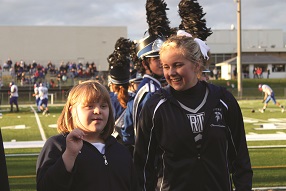
We also see STUNT growing in certain areas because of developments in the sport and in the news. In California, for example, a bill was signed into law, making high school cheerleading a competitive sport. The California High Schools Expanding Equality Respect and Safety (C.H.E.E.R.S.) Act, requires the California Department of Education to develop guidelines, procedures and safety standards with the California Interscholastic Federation (CIF) for high school cheerleading no later than July 1, 2017. As a result, we have seen a lot of schools interested in STUNT because it is able to provide the head-to-head competition that law specifies.
Cheer Safety
AACA continues to be on the forefront of keeping the sport safe. We want athletes to progress from one skill level to another, but we want them to do so in a safe manner. AACA offers a safety course that is available in-person or online, so that coaches can help keep kids learning and developing their skills without being hurt.
We have spent a lot of time addressing concussions, as have all youth sports these days, and we think it is important that not just coaches but parents become attuned to the symptoms. Sometimes, you have to go with your gut feeling and keep a kid off the competition floor until a doctor says everything is fine.
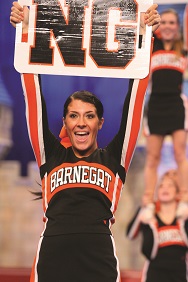
Programs for Everyone
Cheer has become an incredibly popular activity. It’s available in schools and through all-star programs, which are not affiliated with schools. One development we’re happy about is teams for athletes who have special needs, such as developmental or physical disabilities. These may be programs that are just for these types of special athletes, or programs that use a mix of students, some able-bodied traditional students and some with special needs. Either way, these teams are growing and they’re a neat thing for students to be a part of. I think it reminds people who are cheer athletes of why they joined the sport in the first place. It brings them back to the love of the game.

